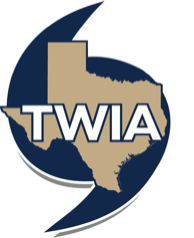At TWIA, our goal is to pay you, the policyholder, everything you are owed under the terms of your policy when you have a claim. There are several factors that affect how we pay claims. These include the amount of insurance provided by the policy, the damaged property’s depreciation, and the policy’s deductible amount.
Insurance to Value – Actual Cash Value vs. Replacement Cost Value
A common insurance industry practice, Insurance to Value (ITV) is a method used to calculate the amount of insurance provided by the policy. ITV is expressed as a percentage. To have an ITV of 80% means that the amount of insurance on the property is 80% of the cost to rebuild or replace it.
When a property is insured through TWIA with an ITV of 80% or more, it is considered to have replacement cost coverage. When a property is insured to a value below 80%, it is considered to have actual cash value coverage. This distinction (replacement cost value (RCV) coverage vs. actual cash value (ACV) coverage) determines whether or not the damaged property’s depreciation is factored into TWIA’s final claim payment amount.
How Depreciation Affects Claim Payments
Depreciation is the reduction in the value of a property with the passage of time, due to wear and tear. Depreciation can significantly reduce the claim payment for ACV policies. Depreciation has less significant effects on the final claim payment amount for RCV policies.
For claims on ACV policies, depreciation on materials is deducted from the replacement cost amount. What remains is the ACV claim payment. This will likely be less than the amount of money needed to fully repair or replace the damaged property with similar new products or material.
For policies with RCV coverage, claims are paid in multiple parts: the first payment is the ACV and then the recoverable depreciation as supplemental payments after repairs or replacement is completed. If your repairs exceed the initial ACV payment, documentation of those repairs must be submitted within 545 days of receiving your initial claims payment.
How to Identify Your Coverage Type (ACV vs. RCV)
Replacement cost coverage is provided by endorsements TWIA-802 (dwelling policies) and TWIA-164 (commercial policies). If these endorsements are not included on your TWIA dwelling or commercial policy, your claim will be processed at actual cash value rather than replacement cost value.
Another way is to look up your policy’s ITV percentage on the policy Declarations page. It is listed under “Coins (coinsurance) %” in the Coverages table. If the percentage is 80% or more, your policy provides replacement cost coverage. If the percentage is lower than 80%, your policy provides actual cash value coverage.
We encourage you to contact your agent to confirm your policy type and discuss your coverages.
How Deductibles Affect Claims Payments
A deductible is the amount of money the policyholder agrees to pay before any claims payment is due from the insurance company. The policyholder chooses the deductible amount when they buy a policy. Higher deductibles result in lower premiums, but cost policyholders more when there is a claim.
The policy’s deductible amount is subtracted from your claim payment. Proof of deductible payment is required. If the cost to repair or replace damaged property is less than the deductible amount, you will not receive a claim payment.
Per Texas law, the full replacement cost will not be paid (see How Depreciation Affects Claims Payments, above) unless the policyholder provides proof they paid the deductible. Proof of payment can be in the form of a canceled check, money order receipt, credit card statement, or a copy of an executed installment plan contract or other financing arrangement that requires full payment of the deductible over time.
How to Identify Your Deductible
You can check your policy’s deductible amount on the policy Declarations page. It is listed in the table Property and Form Description under “Per Item/Per Unit Deductible,” “Amt.” You may also confirm the deductible amount by contacting your agent.
Example Claims Payment Calculations
Below is an example of TWIA claim payments on an ACV policy and an RCV policy.
Example Claim Payment Calculations
$200K coverage | 2% deductible | $20K in TWIA-covered roof damage | 25% depreciation
| Example ACV Coverage Calculator | Example Replacement Cost Value Policy |
| Replacement Cost $20,000 Cost to repair or replace damage | Replacement Cost Value $20,000 Cost to repair or replace damage |
| Depreciation -$5,000 (simplified example: 5 year old roof w/ 20-year expected life) | Deductible -$4,000 Policyholder share of the loss |
| ACV claim amount $15,000 | Depreciation -$5,000 (Simplified example: 5-year-old roof with a 20-year expected life) |
| Deductible -$4,000 Policyholder share of the lossTotal ACV Claim Payment Amount $11,000This claim payment is less than the $20,000 needed to replace damaged property. | First Claim Payment $11,000 |
| Second Claim Payment $5,000 Recoverable depreciation paid after proof of repairs | |
| Total Claim Payment Amount $16,000 Your final claim payment may be less than the amount of money needed to repair/replace damaged property. |
For More Information
Visit the Insurance Information Institute for more information on Insurance to Value.Please contact your insurance agent if you have any questions about your policy and the coverages it provides. If you have a TWIA claim you would like to discuss, contact us through the Policyholder Hub or by calling (800) 788-8247.


